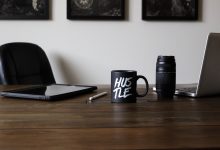Federal Student Loans – What You Should Know

There are mainly three categories of federal student loans: Federal Direct Loans, Direct Unsubsidized Student Loans, and Federal Plus Loans. Federal Direct Loans are given directly by the federal government. These loans offer full tuition assistance in one single application. The applicant needs to prove his/her U.S. citizenship if the applicant is a non-immigrant or his/her dependents.
For students who wish to complete their college education in one of the four pillars of higher learning – law, medicine, business, and nursing – Direct Loans are made available to them by the federal government through a direct credit facility. For students who want to pursue further studies in other allied fields such as education, research, teaching, and library science, direct unsubsidized student loans are given by the federal government. Direct Plus Loans are given by the federal government for students who cannot afford to pay the interest on subsidized federal student loans. Plus loans are made available for the parents of undergraduate students or for students going back to college after having left college.
To find out more about federal student loans, you can take a look at College boards. This is a database site that contains information about all kinds of college loans, including federal student loans. You will get the information you want regarding federal student loans, including the current interest rates. Moreover, you can compare different lenders, so that you can choose the lender with the lowest interest rates. When you go for borrowing information, make sure you choose a reliable source.
Stimulus package federal student loans
The first step in exploring federal student loans is to know what are the eligibility requirements for federal loans offer. The federal Stafford Loan requires that you must be a full-time student who has a 3.0-grade point average. The Perkins Loan on the other hand requires proof of extracurricular activities. If you have not enrolled in a college, you will find it easy to apply for a federal student loan offer by looking at your financial records, credit report, or your parent’s financial records.
If you have decided to borrow money to pay for your education, make sure you do not borrow more than you really need. If you borrow more than you need to finish college, you may need to face problems in paying back your loans. Federal student loan repayment starts once you have graduated from college. Therefore, you may need to find out the repayment schedule for your loans as you may need to start repayment after graduation.
Many college graduates fail to complete their federal student loans because they fail to pursue grants and scholarships. The Pell Grant, in particular, is a popular scholarship for students and parents who need financial aid. However, the availability of these grants and scholarships may be limited and students are required to actively pursue them. This is why some students just give up hope of getting enough scholarships or grants to pay for their college. If this is the case, they should keep in mind that there are other sources of funding such as loans and scholarships offered by state and federal government and private organizations.

Federal student loans covid 19
One of the most common reasons why federal student loans are not paid off is because borrowers do not have good credit ratings. In fact, a bad credit rating can hinder your application for other loans and grant opportunities. The solution is to improve your credit status so you can increase your chances of getting a better interest rate and payment terms. To do this, you should try to get rid of any outstanding debt you may have. You can improve your credit history by paying off any debts you have such as credit card debts, medical bills, and utility bills. Your credit score will also go up if you pay off your debts promptly.
Another reason why many colleges drop out is the low allotment of funds they receive for their living expenses. In particular, students from lower and middle-class families are affected since they are limited to getting grants and scholarship opportunities based on their income. In order to avail of these opportunities, these families should submit their applications for federal student loans and grants. They must do their best to maintain a good living standard by making sure they don’t fall below a certain amount of disposable income.







